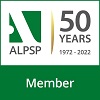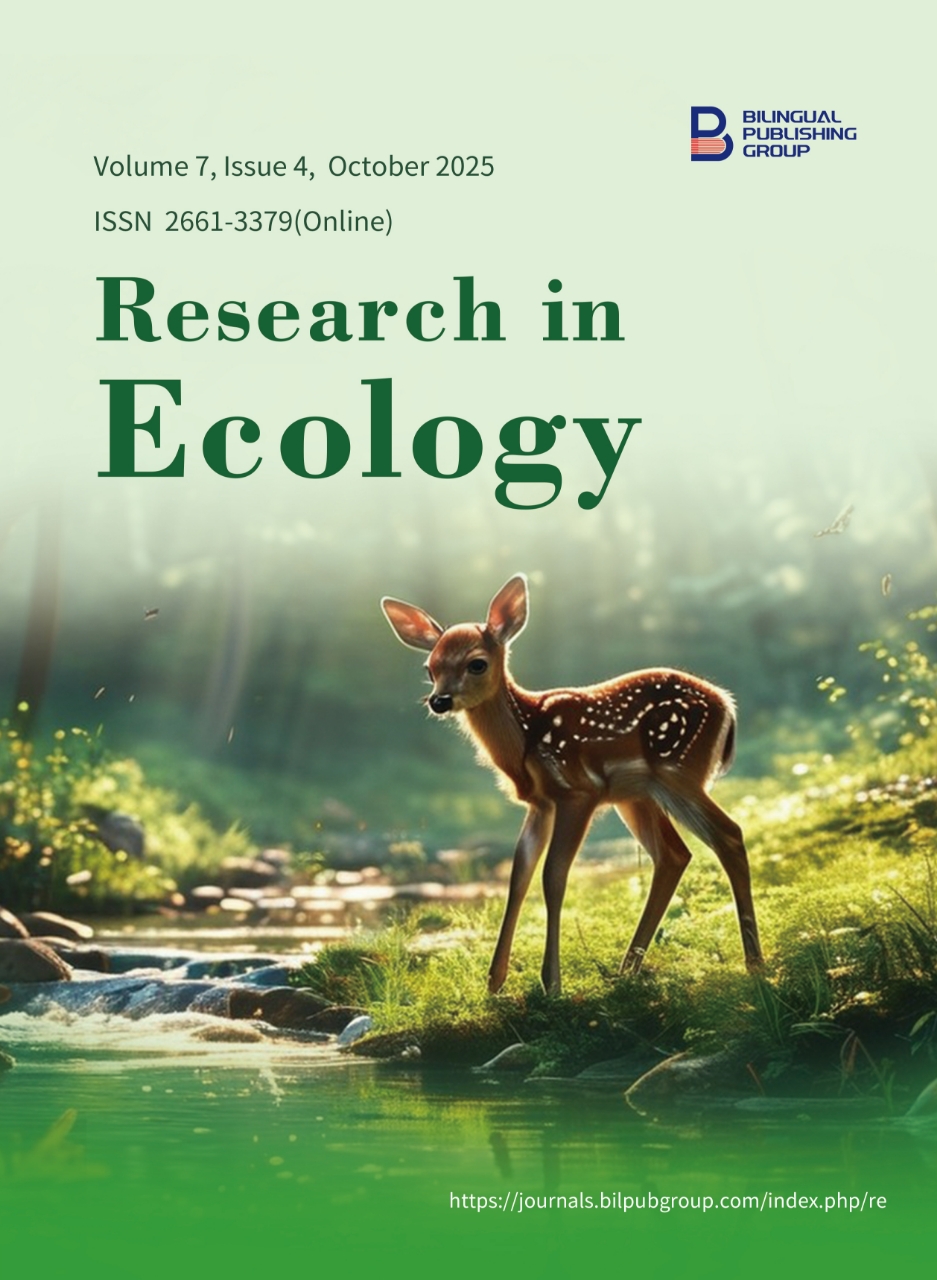
Ecological Pressure and Biodiversity Conservation in Protected Areas: MDS Approach on Road Development in TN Babul, Indonesia
DOI:
https://doi.org/10.30564/re.v7i4.10323Abstract
Infrastructure development within protected areas has become a critical concern in biodiversity conservation, particularly in ecologically sensitive regions like Bantimurung Bulusaraung National Park (TN Babul), Indonesia. This study aims to evaluate the ecological, social, economic, institutional, and infrastructural sustainability of the Maros–Watampone road corridor that crosses TN Babul. Using a qualitative descriptive design, the research employed the Multidimensional Scaling (MDS) method supported by leverage and Monte Carlo analysis. Data were gathered from key stakeholders through purposive sampling and analyzed based on sustainability attributes across five dimensions. The findings reveal that environmental, institutional, and infrastructure dimensions scored in the "less sustainable" category, indicating high ecological risk and governance gaps. In contrast, economic and social dimensions were moderately sustainable, reflecting emerging opportunities for inclusive growth. Sensitive attributes influencing sustainability include habitat fragmentation, road design, governance coordination, and community participation. The study concludes that balancing development with conservation requires integrated, multi-stakeholder strategies and targeted interventions that address the most vulnerable sustainability dimensions.
Keywords:
Protected Area; Sustainable Development; Ecological Impact; Road Infrastructure; Multidimensional Scaling (MDS); TN Babul; Stakeholder Analysis; Conservation StrategyReferences
[1] Rizal, A., Apriliani, I.M., Permana, R., 2020. Sustainability Assessment of Coastal Development in Southern Region of West Java Province, Indonesia. Geojournal of Tourism and Geosites. 30(2), 808–817. DOI: https://doi.org/10.30892/gtg.302spl05-509
[2] Jupiter, S.D., Epstein, G., Ban, N.C., et al., 2017. A Social–Ecological Systems Approach to Assessing Conservation and Fisheries Outcomes in Fijian Locally Managed Marine Areas. Society and Natural Resources. 30(9), 1096–1111. DOI: https://doi.org/10.1080/08941920.2017.1315654
[3] Wilkes, J., 2022. Reconnecting with Nature through Good Governance: Inclusive Policy across Scales. Agriculture. 12(3), 382. DOI: https://doi.org/10.3390/agriculture12030382
[4] Vidal, T.J., de A. Gouveia, N., Müller, M.N., et al., 2025. Mortality patterns and recovery challenges in Millepora alcicornis after mass bleaching event on Northeast Brazilian reefs. Marine Environmental Research. 204, 106864. DOI: https://doi.org/10.1016/j.marenvres.2024.106864
[5] Mascia, M.B., Claus, C.A., Naidoo, R., 2021. Impacts of marine protected areas on fishing communities. Conservation Biology. 24(5), 1424–1429. DOI: https://doi.org/10.1111/j.1523-1739.2010.01523.x
[6] Arsyad, M., Fitriani, F., Tiwow, V.A., et al., 2023. The Effects of El Nino Southern Oscillation on Rainfall in the Karst Area of Maros, National Park Bantimurung Bulusaraung South Sulawesi and its Impact on Flood Disasters. Jurnal Ilmu Lingkungan. 21(4), 772–780. DOI: https://doi.org/10.14710/jil.21.4.772-780
[7] Dassir, M., Paembonan, S.A., Arsyad, U., et al., 2021. Smallholder livelihood adaptation capacity to the risk of climate change disasters in the buffer area of Bantimurung Bulusaraung National Park (TN BABUL) South Sulawesi. IOP Conference Series: Earth and Environmental Science. 807(3), 032054. DOI: https://doi.org/10.1088/1755-1315/807/3/032054
[8] Wang, R., Sun, Y., Zhang, D., et al., 2024. Assessing the Environmental Sustainability of the Transnational Area of China, North Korea, and Russia Using an Improved Environmental Degradation Index. Ecological Indicators. 158(12), 111501. DOI: https://doi.org/10.1016/j.ecolind.2023.111501
[9] Efani, A., Tiarantika, R., Manzilati, A., et al., 2024. Key Variables for Successful Community-Based Ecotourism Management in East Java, Indonesia. Evergreen. 11(4), 2831–2847.
[10] Efani, A., Manzilati, A., Wardana, F.C., et al., 2024. Prospective Variable Design for Agribusiness Success: Sustainability and Food Security Prospects in the Coastal Areas of East Java. International Journal of Safety and Security Engineering. 14(5), 1419–1429. DOI: https://doi.org/10.18280/ijsse.140509
[11] Kumaresan, S., Shekhar, S., Chakraborty, S., et al., 2018. Environmental variables and nutrients in selected islands of Lakshadweep Sea; Addressing coral bleaching. Regional Studies in Marine Science. 22, 38–48. DOI: https://doi.org/10.1016/j.rsma.2018.05.004
[12] Pitcher, T.J., Preikshot, D., 2001. RAPFISH: A Rapid Appraisal Technique to Evaluate The Sustainability Status of Fisheries. Fisheries Research. 49(3), 255–270. DOI: https://doi.org/10.1016/S0165-7836(00)00205-8
[13] Riniwati, H., Harahab, N., Abidin, Z., 2019. A Vulnerability Analysis of Coral Reefs in Coastal Ecotourism Areas for Conservation Management. Diversity. 11(7), 1–15. DOI: https://doi.org/10.3390/d11070107
[14] Abram, N.K., Lim, H.Y., Ng, C.K.C., et al., 2022. The socio-economic and cultural impacts of the Pan Borneo Highway on Indigenous and local communities in Sabah, Malaysian Borneo. PLoS ONE. 17(6), 1–23. DOI: https://doi.org/10.1371/journal.pone.0269890
[15] Jézéquel, C., Tedesco, P.A., Bigorne, R., et al., 2020. A database of freshwater fish species of the Amazon Basin. Scientific Data. 7(1), 1–10. DOI: https://doi.org/10.1038/s41597-020-0436-4
[16] Chakuya, J., Gandiwa, E., Muboko, N., et al., 2022. A Review of Habitat and Distribution of Common Stingless Bees and Honeybees Species in African Savanna Ecosystems. Tropical Conservation Science. 15, 1–12. DOI: https://doi.org/10.1177/19400829221099623
[17] Brundtland United Nations, 1987. Report of the World Commission on Environment and Development: Our Common Future. Brundtland Report. 1(1), 1–19. DOI: https://doi.org/10.14870/jBR.1.1.19-130
[18] Solihuddin, T., Husrin, S., Salim, H.L., et al., 2021. Coastal erosion on the north coast of Java: Adaptation strategies and coastal management. IOP Conference Series: Earth and Environmental Science. 777(1), 012035. DOI: https://doi.org/10.1088/1755-1315/777/1/012035
[19] Mieszajkina, E., 2016. Ecological Entrepreneurship and Sustainable Development Przedsiębiorczość ekologiczna a rozwój zrównoważony. Lublin University of Technology. 12, 163–171.
[20] Cerveny, L.K., 2022. Sustainable Recreation and Tourism: Making Sense of Diverse Conceptualizations and Management Paradigms. Journal of Outdoor Recreation and Tourism. 38(5), 1–18. DOI: https://doi.org/10.1016/j.jort.2022.100520
[21] Tabataba, A., 2019. Sustainable Development Theory: A Critical Perspective and an Integrative Model. Journal of Economics and Sustainable Development. 10(21), 43–52. DOI: https://doi.org/10.7176/jesd/10-21-05
[22] Auad, G., Fath, B.D., 2022. Towards a flourishing blue economy: Identifying obstacles and pathways for its sustainable development. Current Research in Environmental Sustainability. 4, 100193. DOI: https://doi.org/10.1016/j.crsust.2022.100193
[23] Chaliluddin, M.A., Sundari, S., Rizwan, T., et al., 2023. Rapfish: A Rapid Appraisal Technique to Evaluate the Sustainability Status of Pelagic Fisheries in North Aceh Waters. Jurnal Penelitian Pendidikan IPA. 9(7), 5603–5609. DOI: https://doi.org/10.29303/jppipa.v9i7.3841
[24] Purwanti, P., Fattah, M., Qurrata, V.A., et al., 2021. An institutional reinforcement model for the protection of mangroves sustainable ecotourism in indonesia. Geojournal of Tourism and Geosites. 35(2), 471–479. DOI: https://doi.org/10.30892/gtg.35227-674
[25] Gugule, H., Mesra, R., 2022. Studi Pemetaan Sosial Terhadap Pengembangan Masyarakat Sektor Pendidikan Di Desa Lingkar Tambang Kabupaten Bolaang Mongondow. Jurnal Paradigma: Journal of Sociology Research and Education. 3(1), 225–232. DOI: https://doi.org/10.53682/jpjsre.v3i1.3882
[26] Efani, A., Sambah, A.B., Sari, M., et al., 2024. Optimizing Market Efficiency through Blue Economy: Supply Chain and Risk Analysis of Tuna Fisheries in South Coastal East Java. Egyptian Journal of Aquatic Biology and Fisheries. 28(5), 961–980. DOI: https://doi.org/10.21608/ejabf.2024.382108
[27] Muis, A., Hiola, F., Syamsiah, et al., 2023. Inventory of Domesticated Orchid Species in Samaenre Village Mallawa District, Maros Regency, South Sulawesi, Indonesia. IOP Conference Series: Earth and Environmental Science. 1209(1), 012021. DOI: https://doi.org/10.1088/1755-1315/1209/1/012021
[28] Polo-Mendoza, R., Peñabaena-Niebles, R., Giustozzi, F., et al., 2022. Eco-friendly design of Warm mix asphalt (WMA) with recycled concrete aggregate (RCA): A case study from a developing country. Construction and Building Materials. 326, 126890. DOI: https://doi.org/10.1016/j.conbuildmat.2022.126890
[29] Rosmala, F., Bambang, A.N., Purnaweni, H., 2021. Leverage Factors at Red Brick Production Centers in Sinar Tanjung Village, Banjar City, West Java Province. IOP Conference Series: Earth and Environmental Science. 799(1), 012013. DOI: https://doi.org/10.1088/1755-1315/799/1/012013
[30] Elvira, S., Putra, R.E., Rahman, H., 2022. Analisis Keberlanjutan Agrowisata Berbasis Pertanian Berkelanjutan: Studi Kasus Kebun Strawberry ‘Upang,’ JSEP (Journal of Social and Agricultural Economics). 15(2), 123. DOI: https://doi.org/10.19184/jsep.v15i2.30767
[31] Ferreira, A., Alves, A.S., Marques, J.C., et al., 2017. Ecosystem Response to Different Management Options in Marine Protected Areas (MPA): A Case Study of Intertidal Rocky Shore Communities. Ecological Indicators. 81(1), 471–480. DOI: https://doi.org/10.1016/j.ecolind.2017.06.028
[32] Abecasis, R.C., Schmidt, L., Longnecker, N., et al., 2013. Implications of community and stakeholder perceptions of the marine environment and its conservation for MPA management in a small Azorean island. Ocean and Coastal Management. 84, 208–219. DOI: https://doi.org/10.1016/j.ocecoaman.2013.08.009
[33] Sanabria-Fernandez, J.A., Lazzari, N., Riera, R., et al., 2018. Building up marine biodiversity loss: Artificial substrates hold lower number and abundance of low occupancy benthic and sessile species. Marine Environmental Research. 140, 190–199. DOI: https://doi.org/10.1016/j.marenvres.2018.06.010
[34] Sumaila, U.R., Tai, T.C., Lam, V.W., et al., 2019. Benefits of the Paris Agreement to ocean life, economies, and people. Science Advances. 5(2), 1–9. DOI: https://doi.org/10.1126/sciadv.aau3855
[35] Osipchuk, A.S., Skydan, O.V, Valinkevych, N.V, et al., 2023. Innovative Ecotourism Product Development Based on the Use of Geographic Information Technologies. Journal of Geology, Geography and Geoecology. 32(1), 164–177. DOI: https://doi.org/10.15421/112316
[36] Mentis, M., 2020. Environmental Rehabilitation of Damaged Land. Forest Ecosystems. 7(1), 1–16. DOI: https://doi.org/10.1186/s40663-020-00233-4
[37] Kamat, V.R., 2014. ‘The ocean is our farm’: Marine conservation, food insecurity, and social suffering in southeastern tanzania. Human Organization. 73(3), 289–298. DOI: https://doi.org/10.17730/humo.73.3.f43k115544761g0v
[38] Zhang, W., Fang, S., Li, Y., et al., 2019. Optimizing the integration of pollution control and water transfer for contaminated river remediation considering life-cycle concept. Journal of Cleaner Production. 236, 1–10. DOI: https://doi.org/10.1016/j.jclepro.2019.117651
[39] Baynham-herd, Z., Redpath, S., Bunnefeld, N., et al., 2018. Conservation Conflicts: Behavioural Threats, Frames, and Intervention Recommendations. Biological Conservation. 222, 180–188. DOI: https://doi.org/10.1016/j.biocon.2018.04.012
[40] Barua, P., Rahman, S.H., Barua, S., et al., 2020. Climate change vulnerability and responses of fisherfolk communities in the South-Eastern coast of Bangladesh. Water Conservation and Management. 4(1), 20–31. DOI: https://doi.org/10.26480/wcm.01.2020.20.31
[41] Weeden, A.-M., Pamment, N., 2024. ‘You walk on glass if you are in that space’: Risks and harms of corruption in wildlife justice pathways in Uganda. Journal of Economic Criminology. 6, 100102. DOI: https://doi.org/10.1016/j.jeconc.2024.100102
[42] Pinheiro, R.O., Triest, L., Lopes, P.F.M., 2021. Cultural Ecosystem Services: Linking Landscape and Social Attributes to Ecotourism in Protected Areas. Ecosystem Services. 50, 101340. DOI: https://doi.org/10.1016/j.ecoser.2021.101340
[43] Wiyanto, D.B., Harahab, N., Rudianto, et al., 2020. Cultural Heritage Conservation of ‘the United State Army Transport (Usat) Liberty’ Shipwreck Site As a Sustainable Scuba Diving Ecotourism. International Journal of Conservation Science. 11(4), 931–944. DOI: https://doi.org/10.931-944/cbl.5327637
[44] Di Fiore, G., Specht, K., Rover, O.J., et al., 2022. Stakeholders’ social acceptance of a new organic waste management policy in the city of Florianópolis (Brazil). Journal of Cleaner Production. 379, 134756. DOI: https://doi.org/10.1016/j.jclepro.2022.134756
[45] Wardana, I.M., Sukaatmadja, I.P.G., Ekawati, N.W., et al., 2021. Policy Models for Improving Ecotourism Performance to Build Quality Tourism Experience and Sustainable Tourism. Management Science Letters. 11(1), 595–608. DOI: https://doi.org/10.5267/j.msl.2020.9.007
Downloads
How to Cite
Issue
Article Type
License
Copyright © 2025 Safri Arif, Harsuko Riniwati, Gatot Ciptadi, Hasnidar, Reny Tiarantika

This is an open access article under the Creative Commons Attribution-NonCommercial 4.0 International (CC BY-NC 4.0) License.




 Safri Arif
Safri Arif






